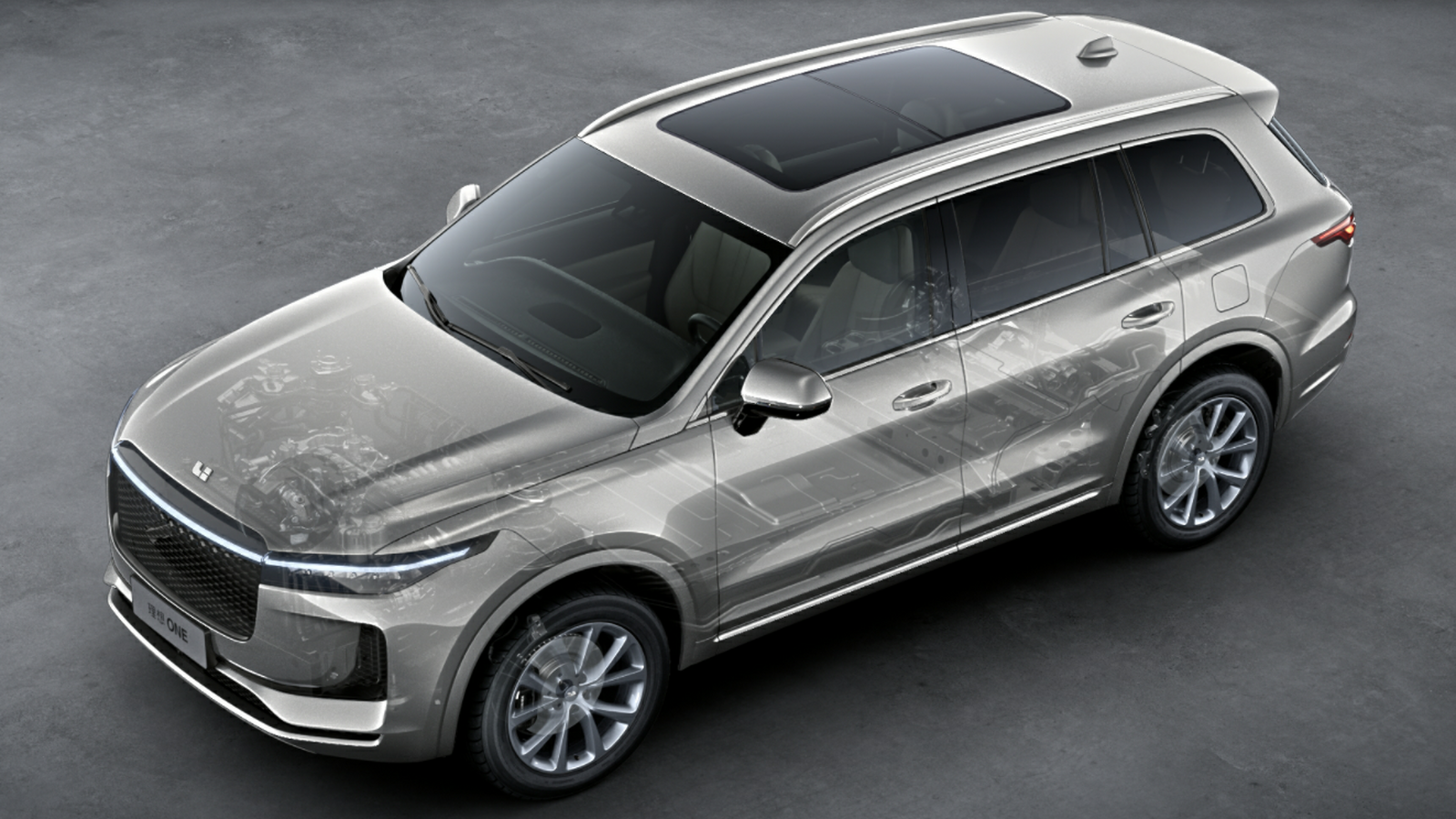Hello everyone, I am a BEV driver. As one of the first car owners, after more than a year of use, I have gained a lot of experience to share with the new members of the Ideal family.
Because the Ideal ONE adopts the technology of range-extended electric vehicle, you may be curious about the three driving modes: pure electric priority, hybrid, and fuel priority when you first pick up the car. Which driving mode should you choose for your daily use in different scenarios?
Generally, there are three different usage scenarios for the Ideal ONE car owners: installing a home charging pile, unable to install a home charging pile but convenient for public charging, and no convenient charging conditions. Next, I will provide corresponding driving strategies for these three different scenarios.
Home Charging Pile Installation – Pure Electric Priority
In pure electric priority mode: when the battery level is above 17%, the car will use electricity first without starting the range extender; when the battery level is below 17%, the car will start the range extender and maintain the battery level around 17%.
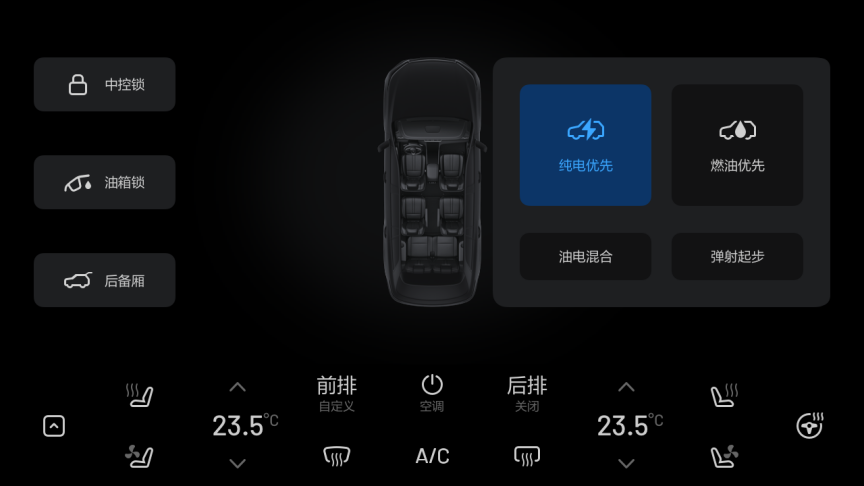
If your daily commute is within 100 km, after selecting the pure electric priority mode, your Ideal ONE is almost the same as a pure electric vehicle. Many car owners around me haven’t refueled for 3 months to half a year, and the cost of use is very low.
If the peak and valley electricity prices are implemented in your area, charging between 22:00 and 8:00 the next day will enjoy a price of more than three cents per degree, and it costs only about 10 yuan to charge for 100 kilometers, which is an average of one cent per kilometer.
- How to easily enjoy off-peak electricity prices?
Be sure to master the Ideal ONE’s reservation charging function. When charging at home, it takes about 5 hours from 17% to 100%. I usually set it to start charging at 1 am because the probability of using the car from 1 am to 6 am is the lowest.
In the Ideal Car app, open the vehicle control interface-click the remaining power-enter the reservation charging interface, and follow the prompts. At the same time, in the vehicle control screen, select the vehicle settings-charging management, and you can also set the reservation charging function, which is convenient for car owners without mobile signal in the underground garage to operate.
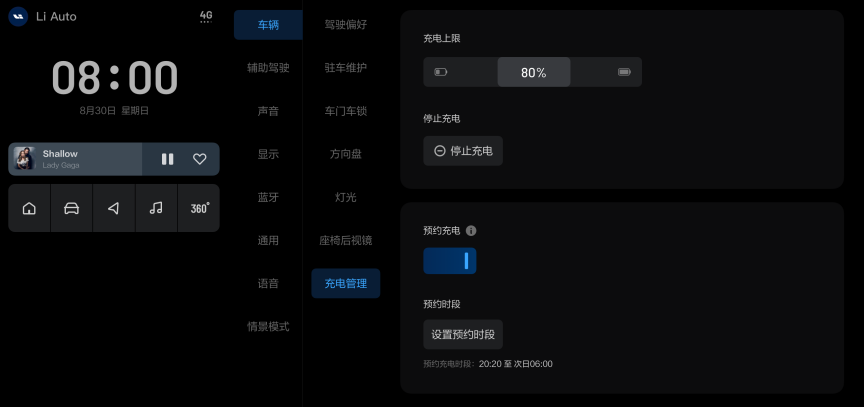
- What is the appropriate charging limit to set?
Many new car owners usually ask, should the battery be charged to 100%? Will overcharging affect the safety and life of the battery? Here is a unified reply: charging to 100% will not affect the safety and life of the battery, because the Ideal ONE has designed a safety storage of electricity for the battery, so you can use it with confidence.From the perspective of user experience and energy saving, stopping charging at 90% will result in lower power consumption because there is no efficient energy recovery when the battery is in the 90% to 100% stage. The remaining 10% of the battery may only provide about 10 km of mileage, and the effect of energy recovery will also be weak. However, the battery level between 80% and 90% can provide about 15 km of mileage. Ultimately, it depends on personal preference, but overall, it can save money.
- Under what circumstances will the battery insulation function be turned on?
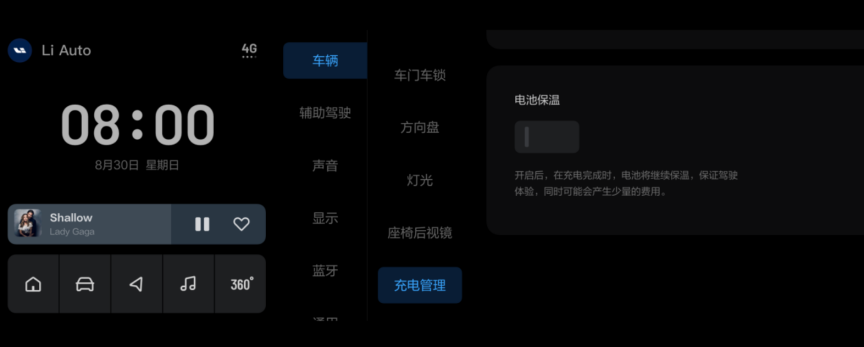
The battery temperature can affect the power and energy consumption of the entire vehicle. The insulation function keeps the battery warm after charging is completed, which will consume some electricity, about 2 kilowatt-hours per hour of insulation.
Therefore, for those who usually park their vehicles outdoors to charge and in low-temperature weather conditions, it is recommended to turn on this function. If the charging is done at home in a suitable environment like an underground garage, then this function can be turned off. Note that this function cannot be activated during fast charging.
No access to home charging but public charging is convenient – Hybrid mode
The hybrid mode allows for the switch to the hybrid mode regardless of battery level. When the battery level drops below 80%, the extended-range engine will start and allow the battery level to slowly drop to 17% during daily driving.
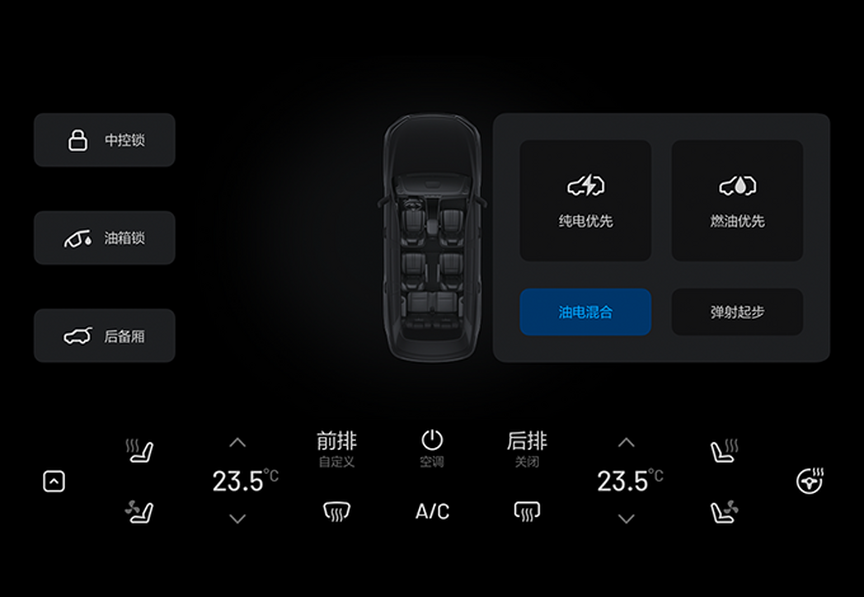
Searching for charging stations on the map is much more frequent now than two or three years ago. Although energy replenishment efficiency is still inferior to refueling, the low-frequency charging demand can still be met. The most crucial thing is that the Idean One has a fast charging port that can charge from 20% to 80% in 30-40 minutes.
Three advantages of the hybrid mode
The first advantage is a good NVH experience. NVH is the abbreviation of Noise, Vibration, and Harshness. Because the battery level can slowly drop, the extended-range engine can run at a lower power in some scenarios and achieve an NVH state comparable to electric priority.
The second advantage is an extended charging time. Because both gasoline and electricity are consumed together, according to the driver’s actual usage, it is possible to use the car for one or two weeks before needing to charge, thereby greatly alleviating the driver’s charging anxiety.
The third advantage is a lower cost of use. Because the cost of public charging is lower than the cost of refueling, the cost of the hybrid mode will be lower than that of the gasoline-priority mode.
No convenient charging condition – Gasoline-priorityFuel prioritization mode: You can switch to fuel prioritization mode at any battery level, and when the battery level is below 69%, the range extender will be activated to generate electricity from the gasoline engine. The fuel prioritization mode has two settings: standard and strong, with the latter being more suitable for winter use.
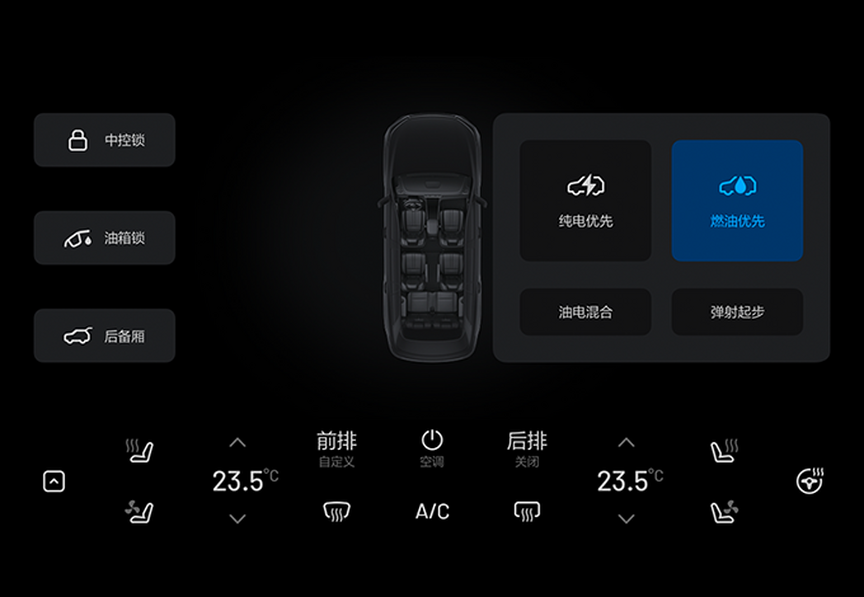
This mode is mainly designed for owners who have inconvenient or do not want to charge their ONE. In fuel prioritization mode, the power generation of the range extender is higher compared to the hybrid mode, and the corresponding fuel consumption and NVH also increase.
- NVH performance in fuel prioritization mode
Based on my personal experience of using the ideal ONE at different temperatures, I will make a rough judgment about the performance of the range extender in fuel prioritization mode. If the outdoor temperature is 5℃ or above, the NVH of the ideal ONE in fuel prioritization mode is better than that of a gasoline vehicle. If the temperature is below 5℃, the NVH is roughly equivalent to that of a gasoline vehicle. I believe that the main factor affecting the NVH performance of the range extender is the temperature, and the above personal feelings are subjective.
- What is the fuel consumption performance of the ideal ONE?
The factors that affect the overall fuel consumption performance of the ideal ONE are relatively complex, such as driving with a cold engine and using air conditioning for electric heating, etc. After using it throughout the year, I found that driving at speeds above 110 km/h and short-distance winter driving are two scenarios where fuel consumption is higher.
However, after a year of use in all seasons, my average fuel consumption per 100 kilometers is about 9 liters, and the fuel consumption per 100 kilometers of the ideal ONE in the 2020 Xiao Xiong fuel consumption statistics for large SUVs was 8.52 liters, which is indeed lower than that of gasoline vehicles of the same level.
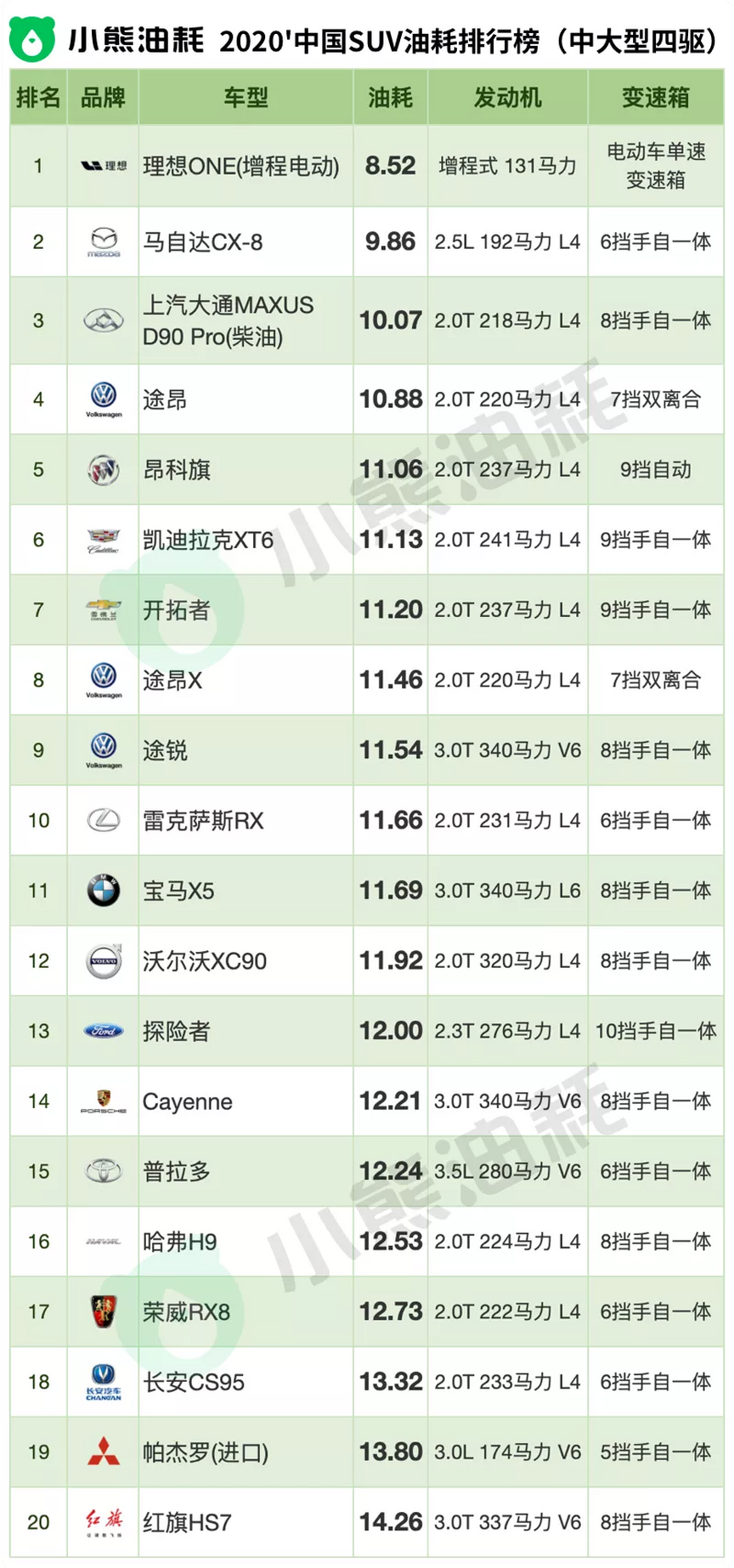
FAQ:
Q: What is the driving experience of the ideal ONE when the battery level is below 20%?
A: The ideal ONE will never be in a situation where it runs out of battery first and then runs out of gasoline. It will only run out of gasoline first and then run out of battery, because the range extender has a critical point for forced startup at 17% battery level.
Under low battery level, the power level of the ideal ONE will decrease, which can be understood as changing from 3.0T power to 2.0T power. Even at high speeds, a 17% battery level can still ensure overtaking and driving experience below 120 km/h.
Q: What mode should be used for high-speed long-distance driving?
A: Before long-distance driving on the highway, regardless of the remaining battery level, it is recommended to switch to fuel prioritization or hybrid mode, keep the battery level high, and avoid the scenario where charging stations are scarce. The fuel consumption performance of the two modes on the highway is basically the same.
Q: Can the battery be regenerated when driving at high speeds?
A: In some scenarios, it is possible. Assuming the vehicle is equipped with advanced driving assistance and the mode is adjusted to fuel priority or hybrid mode when the battery level is 40%, activating the fuel priority mode on the highway during steady cruising can recharge the battery by approximately 10% for every 100 km driven, while increasing fuel consumption by about 10% during the recharge phase. If the battery level is not being recharged during a period of steady cruising, it may be due to uphill driving that went unnoticed by the driver.
Q: Why does the hybrid mode start when the battery level is at 80%?
A: Starting the range extender earlier in the hybrid mode can extend the charging cycle.
Q: When is the fuel priority mode most effective?
A: It is recommended to activate the fuel priority mode when the battery level is above 60%. At this level, the efficiency of kinetic energy recovery is higher, which makes the vehicle’s NVH, remaining battery level, power performance, and energy consumption level more balanced.
Q: Why is the minimum battery level maintained around 17% in pure electric mode?
A: The battery performance drops suddenly at lower levels, which affects the range extender strategy. Reserving a certain amount of electric power ensures good power consistency, enabling the vehicle to meet acceleration, overtaking and other driving demands even at low battery levels.
This article is a translation by ChatGPT of a Chinese report from 42HOW. If you have any questions about it, please email bd@42how.com.
